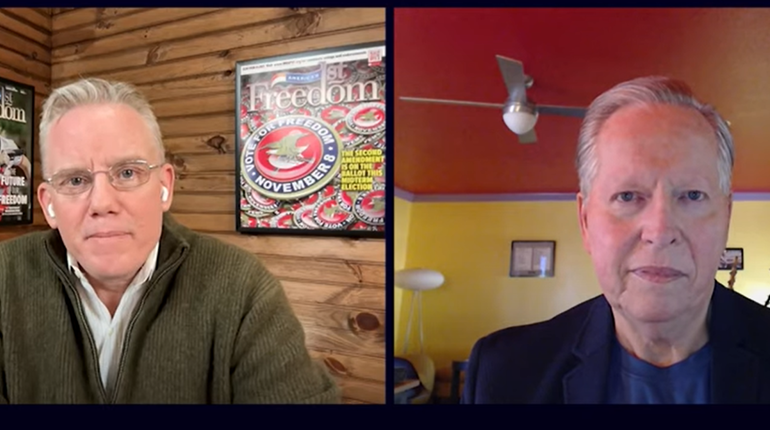
So this is the White House Press Briefing Room, I thought, realizing that the room we so often see on television is only about the size of an elementary school classroom.
Still, it was hard not to feel reverent about this room in the West Wing of the White House. Presidents sometimes speak here. More often, the White House press secretary faces off here with an oddly hierarchal collection of members of the media.
I settled into a seat in the back so I could closely take in this curious place. I was waiting to interview President Donald J. Trump (R) for the NRA. It was the summer of 2020 and the press room was alive with White House correspondents that any news junky would recognize. I was there hours before the Oval Office interview because I had to take a COVID test and wait to be cleared in that most-insane part of the pandemic.
At first, I thought it was like being in some festival in a foreign country. You curiously listen, watch and wonder about many things as you get a taste of the culture. But soon, I realized this wasn’t all that foreign to me. I’ve been around the media throughout my career in congressional hearing rooms, on press junkets and in green rooms. But still, something in this milieu was different.
It wasn’t surprising that nearly all of the media members were exhibiting symptoms of Trump derangement syndrome. But the symptoms were so flamboyant. They all had this juvenile, snarky tone. They were like a high-school clique of cool kids reveling in the shared experience of mocking the uncool.
But then, amidst this media clown show, reality walked by right outside. A sniper team dressed in black, one with a rifle slung in a pack over his back, walked by a wall of windows along one side of the White House Press Briefing Room. I wondered what rifle he had and what it was chambered in. And then, in my head, I thanked them for standing watch.
I then looked around the press room and noticed that none of the many media members had even glanced at the sniper team. A few minutes later, they also didn’t seem to notice another sniper team going the other way—a team that was presumably relieved from the roof of the White House by the first.
Likely those members of the media had seen this change of the guard many times. But still, their apathy was telling. Here was this sniper team going up to the roof of the White House prepared to literally shoot any invader to protect the president and, by default, even these members of the media, and yet the White House correspondents gave them less attention than they would a waiter.
To the media, these highly trained men with guns were just faceless people guarding the important people, including them. To me, the very presence of the snipers was a critical contrast to the media members and their oft-repeated bias against the Second Amendment-protected right to keep and bear arms.
But was I was reading too much into the little scene of the changing of this portion of the White House guard?
I asked a few members of the media. They shook their heads at me and said, “What? Oh, right. Them. Who are you?” To them, armed security was so normal, it was low-class to even acknowledge it. They were too used to being among the protected special class in the gated and guarded communities.
After a while, Kayleigh McEnany, who was then the White House press secretary, came to take me to the Oval Office, and all the media members did turn their heads to watch.

































